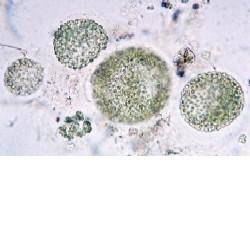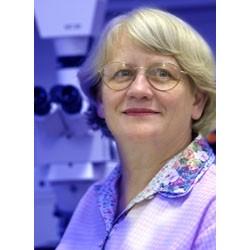CQU, A Water Source; World- wide Attention on CQU Blue-Green Algae Research
Published on 29 May, 2002
Long-term research conducted at Central Queensland University (CQU) on Australia's fresh waterways has new implications for safe drinking water standards around the world.
CQU Biologist Dr Larelle Fabbro, a national expert in the area of blue-green algae who has studied Central Queensland's Fitzroy River catchment for more than 15 years, says the characteristics of regional water bodies like Lake Elphinstone (an 8 kilometre long, shallow natural lake near Mackay) - home to some of the most dense and diverse blue green algae blooms in the world, including toxin forming species - are no longer unique.
 So-called hot-spots are now turning up all over the globe.
So-called hot-spots are now turning up all over the globe.
"One of the common toxin producing blue-green algal species in our region, Cylindrospermopsis raciborskii, is now appearing in bodies of water outside of Australia including Europe, Florida, Canada, Brazil, Japan and Africa," says Fabbro. "It is thought that increased temperatures are leading to an increase in the prevalence of this organism." But Central Queensland has been unique to date in that it has a wide range of microscopic organisms known to be active grazers of toxic blooms. Scientists at CQU recently discovered and investigated an organism that eats Cylindrospermopsis. However, its numbers in the Fitzroy River Catchment are reducing, posing a serious challenge for the future. Blue-green algae grow in stagnant or standing water. It sometimes causes surface foams or scums and often discolours the water. Blooms generally occur where there are high levels of nutrients in the water, together with warm, sunny and calm conditions. Toxic algae blooms can threaten the health of animals, fish, and humans that come in contact with or ingest them.
But blooms and scums are not always dangerous and it is not possible to tell whether a bloom or scum is harmful from its appearance. That's why CQU's research and engagement within and outside the region are so important.
"We have to keep in mind that most blue-green algae don't cause serious health problems. Algae occur naturally and oxygenate the water. There's just a small group of toxin producing forms that normally grow in high nutrient water. They're the ones we have to identify and treat for the public's health and well being." Fabbro is often consulted about her research to identify various blue-green algae, especially those from blooms that have been associated with animal deaths. She is currently assisting colleagues from New South Wales with an investigation of a new blue-green alga first discovered in Rockhampton that's now appearing in a recreational waterways elsewhere. Fabbro and Peter Baker of the Australian Water Quality Centre are now updating an identification guide to the blue-green algae of Australian freshwaters. That information is used to develop and refine strategies that help ensure the safety of our water and improve the sustainable health of the region... and the world.
 Pictured are Larelle Fabbro and and image of a new blue-green alga first discovered in Rockhampton that's now appearing in a recreational waterways elsewhere.
Pictured are Larelle Fabbro and and image of a new blue-green alga first discovered in Rockhampton that's now appearing in a recreational waterways elsewhere.

